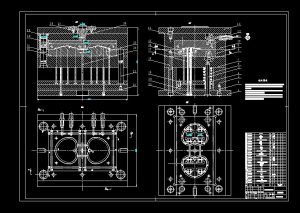Injection mold temperature is the most important variable in injection molding.
No matter what kind of plastic is injected, the basic wetting of the mold surface must be guaranteed. A hot mold surface keeps the surface of the plastic liquid for a long time, enough to create pressure in the mold cavity. If the mold cavity is filled full and the frozen surface becomes hardened, the cavity pressure can press the soft plastic on the metal, and then the part surface will copy nice.
On the other hand, if you fill into the cavity under low-pressure plastic suspended, however short. Then it will cause a slight contact metal stain, sometimes called a bad gate mark.
For each plastic raw resin and plastic part, there is a limit to the surface temperature of the injection mold. Beyond this limit, there may be one or more undesirable effects (e.g., components can overflow the burrs).
Higher Injection mold temperature will have less flow resistance.
In many of the injection molding machines, which means faster through pouring gate and cavity. Because the injection flow control valve is not correct this change, fill faster will cause higher effective pressure in the runner and cavity. It may cause a flash of overflow. Because the hotter model does not freeze the plastic that enters the overflow area before the high pressure is formed, the flux can flash material around the ejector rod and overflow into the gap of the parting line.
This requires good injection rate control, and some modern flow control programmers can do it well. In general, the increase in injection mold temperature will reduce the plastic condensate layer in the cavity. So that molten material in the cavity easier to flow, so as to obtain greater weight and better surface quality of the parts
At the same time, Up the injection mold temperature will also increase the tensile strength of the parts.
Injection mold temperature preservation methods
for many molds, especially engineering thermoplastics, operate at relatively high temperatures. Such as 80 degrees Celsius or 176 degrees Fahrenheit
If the injection mold is not insulated, the heat lost to the air and the injection molding machine can be as easily removed from the cylinder. If hot runner molds are considered, try to reduce heat exchange between the hot runner section and the cooled injection molded parts. This method reduces energy loss and warm-up time


